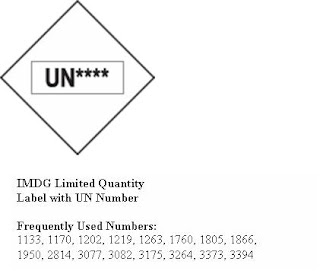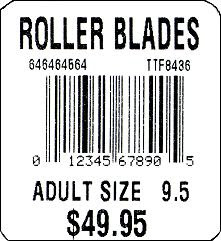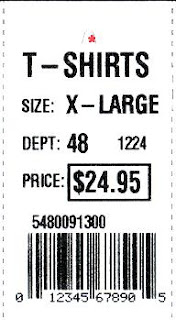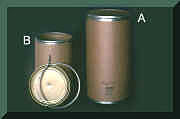|
<=***~UTOPIA OF LOGISTICS PACKAGING~***=>
|
|
|
<*+DISCOVER MORE ABOUT LOGPACS IN HERE+*> |
|
About Me
We are a group of Logistics students. Group members are Vannessa Ho, Pamela Loke, Evelyn Yeo, Zulfadhli and Sophia Tan. All of us are doing this blog for the first time to complete our DCM project!! Feel free to give us comments.. Thank you!
|
Friday, January 19, 2007 Introduction Packaging is the enclosing of a physical object, typically a product that requires protection from tampering, and allows for easy transportation.
-Protection against physical impact on object Hazard Warning Labels
Dangerous goods are divided into nine classes based on their hazardous properties.
All packages and containers, shipping containers, unit loads, tankers, etc. which hold dangerous goods for transport must carry the correct Class Label. This label (Warning Diamond) shows the nature of the hazard by the colour and symbol, and the Class of the goods by numeral. The responsibility for classification of products lies with the manufacturer or person packaging the products. Warning Diamonds are required under National and International legislation to Transport Hazardous Material Substances, by road, rail, sea and air.     Universal Orientation Labels  This orientation label is MANDATORY for any liquids being transported by air, sea, rail or road Overpack Used  With this label, shippers and handlers to immediately know that there are inner packs containing hazardous materials or dangerous goods. This allows them to handle the shipment with proper care to ensure safety. Fragile  Alerts handler that care is needed when handling shipment.  Ambient/Controlled Temperature  Label allows shipping handlers to know the kind of environment to store package. Away from Heat  IATA regulations state all highly flammable goods that are shipped by air require this “Keep away from heat” label. Cryogenic Label  Regulation states that cryogenic liquid label must be present on all packages containing nitrogen and other cryogenic liquids, to ensure the safety of all shippers and handlers. Volume of Shipment 
Aircraft Labels
For Aircraft Uses Only Labels
Used to alert shipping handlers that package contains magnetized material that would interfere with aircraft’s compass detector. Used to alert shipping personnel that package contains dangerous substances that must not be carried on board passenger aircraft. 
The various kinds of airline labels are dependent upon the airline company used. Airline labels are used so as to identify shipments easily when loading and unloading consignments, ensuring that they are loaded onto the correct aircraft to its desired destination.
Dangerous Goods
Dangerous Goods Labels
 To indicate the name of shipper and the type of Dangerous Goods shipped  To indicate that Infectious item is on board carrier 
Live Animals The following live animals are accepted for transportation unless poisonous, venomous, and/or a Threatened or Endangered Species.
This green label is a mandatory label used whenever transporting live animals.  Thursday, January 18, 2007 Biopharmaceutical
Types of labels required when shipping pharmaceuticals:
Ø Infectious Substance Label (if shipment is declared infectious) Ø Diagnostic Specimens or Biological Specimens Packed in Compliance with IATA Packing Instruction (if non infectious) Ø Dry Ice (Misc. 9) Label (only if shipment is packed on dry ice) Ø Proper Shipping Name (typed label or written on the box) Ø UN or ID # (typed label or written on the box) Ø Name and address of both Shipper and Consignee (to include individual name and telephone numbers). Ø Indicate the "Responsible Person" for the shipment. Ø Orientation Labels (this side up) Ø Please refrigerate, Keep Frozen (if applicable) Ø Inner packages comply with prescribed specifications/ Overpack label (when using an overpack) The following are standard packaging labels required when transporting Infectious Substances. **Note: UN Class 9 label to be used if dry-ice is used. To indicate quantity of dry-ice used as well The following are standard packaging labels required when transporting Dangerous Goods. **Note: UN Class 9 label to be used if dry-ice is used. To indicate quantity of dry-ice used as well
Food
Nutritional Label
Barcodes Item Label can be found in almost all of our daily life’s purchases/commodities. It comprises of the item’s description. The barcode number spells various kind of information such as, the item identification number, expiry date of the product, place of origin, production date etc.  
Hazardous Materials Packaging - Introduction
INTRODUCTION
Packaging for hazardous materials to be transported by aircraft has more restrictions than packaging for hazardous materials for road transportation. Hazardous materials are packed in “performance packaging” which consists of the inner receptacles, cushioning and absorbent materials and an outer packaging material. They have been designed, produced, tested and certified for different classes of hazardous materials and packaging groups. All hazardous materials packages have distinct UN markings on the packaging components and can be recognized by their unique identification numbers. UN symbol must be certified and printed on cartons by suppliers. Hand-drawn or paste on are not allowed. In addition, staffs in companies handling hazardous materials must be properly trained to ensure safety. Hazardous Materials Packaging
DOT-SP 8249 EXEMPT PACKAGING
This packaging system allows shippers to transport hazardous materials in absolute safety. It is extremely useful in reducing risks that shipments require no hazardous labels. The use of this system to ship materials with quantity limits not exceeding one litre for liquids or 2.85 kg (6 1/4 pounds) for solids.
Hazardous Materials Packaging - Drums
FIBREBOARD DRUMS
Fibreboard drums are light and they are of low cost. They are used to pack solid and dry products. These drums are UN tested and approved. Drum lids are usually made of plastic or metal and a locking ring with security seal. POLY DRUMS Perishable Food Products- Wet Cargo, Vegetable Products & Live Animals Perishable food commodities are requiring refrigeration, either chilling or freezing, to extend their self-life. Without refrigeration, perishable commodities will be subjected to rapid decay or deterioration from micro-organisms that may pose risk to health if consumed. Perishable food commodities have a few categories like wet cargo, vegetable product, live animals for human consumption, beer and etc. Wet cargo can be defined as goods which may yield moisture or contains great quantity of liquid due to their nature, such as fresh fish, fruits, meat, sea food, etc. Vegetable products are considered as horticultural products too, as these products are grown from plants through gardening. Perishable shipments must comply with the following requirements: Wet cargo (seafood, meat, etc.) shall be pack only in water-tight (sealed) and resistant packaging, which are unlikely to spill or leak, and would not develop any bad odour. Vegetables products (fruits, vegetables, etc.) shall be pack in a packaging that can withstand, without collapsing, and can stack at a height of at least 3 metres high. Performance test for this type of packaging should be carried out in a conditioned environment of 22 to 24 °C and a relative humidity of 75 to 80% with a load equivalent to the total weight of identical packages which may be stacked on it during the carriage up to height of 3 metres. Live animals for human consumption (lobsters, shrimps, prawns, etc.) must be place in containers that meet the requirements of IATA’s Live Animals Regulations. Hence these live animals can maintain their freshness while arriving their destinations. Perishable Food Products- Beer Beer is also considering as a perishable foodstuff. As it will deteriorates as a result of the action of bacteria, light, and air. However, unlike other food products, packaged beer is not legally mandated to carry a "sell by" date. Beer should be always placed in a temperature-controlled or refrigerated environment to prevent the beer from deteriorating. Most beer is packed in bottles, cans, widgets and growlers. Clear versus colored glass bottles The reason why most beer bottles are amber or green, it is because the full spectrum of daylight can have undesirable effects on a beer over a period of time. The ultraviolet portion of the spectrum is very harmful; promoting chemical reactions that produce "off flavors" that will take the edge off the freshness of a beer. Dark glass greatly inhibits this undesired effect, whereas clear glass leaves the beer very vulnerable to be "light struck." Nitrogen capsules ("widgets") The widget is a small plastic capsule containing pressurized nitrogen gas that rushes out of a pinhole when the can is opened and the internal pressure is lowered. Widgets have now found their way into bottles as well as cans, although it does not necessarily has the same levels of critical acclaim. Aluminum cans Aluminum cans are more popular at the general market. Packaging in aluminum cans does necessarily imply pasteurization. Although cans do not fit the image of the craft-brewed product, there is no technical reason why high-quality beer cannot be sold in cans, and, in fact, a number of craft brewers are launching canned products. The reason why craft brewers used cans instead of bottles is due to the high capital cost of the pasteurization and packing equipment required.  Growlers A growler is a plastic or glass container used for selling fresh draft beer straight from the tap. Beer sold in this format, generally from a brewpub, must be refrigerated and then consumed within a day or two.  |




























